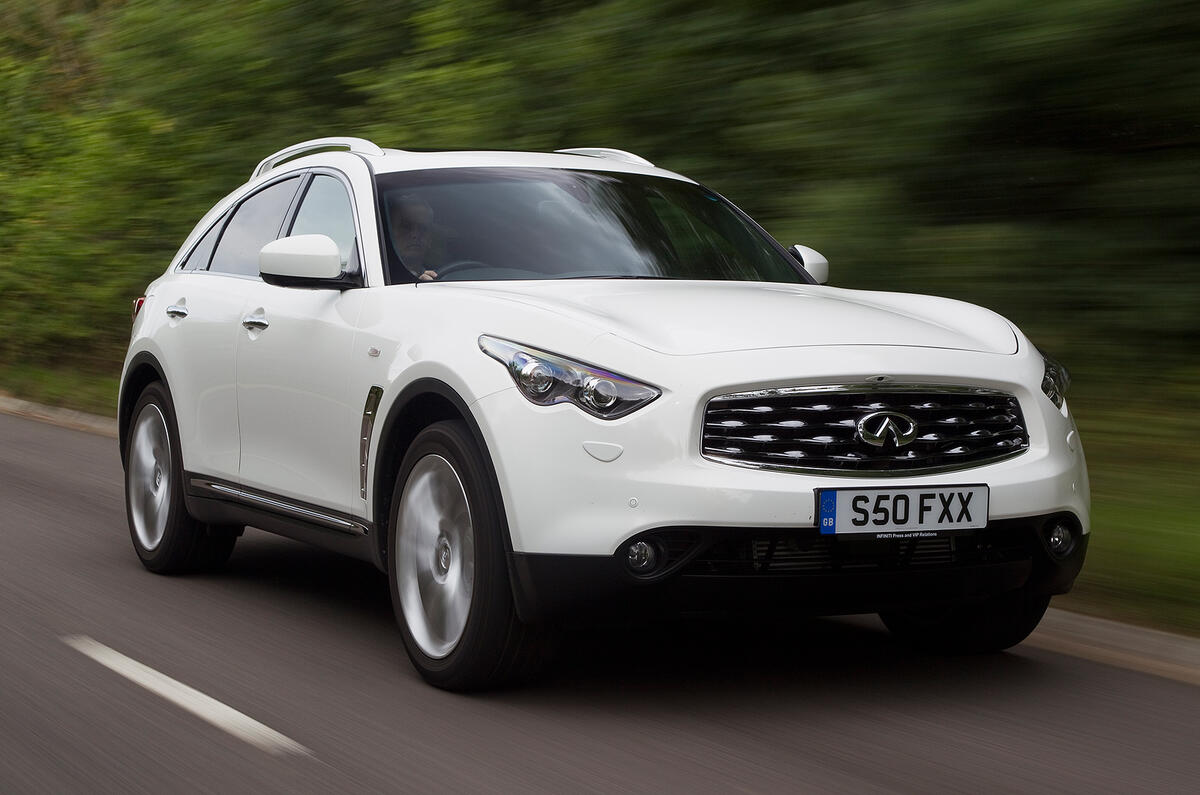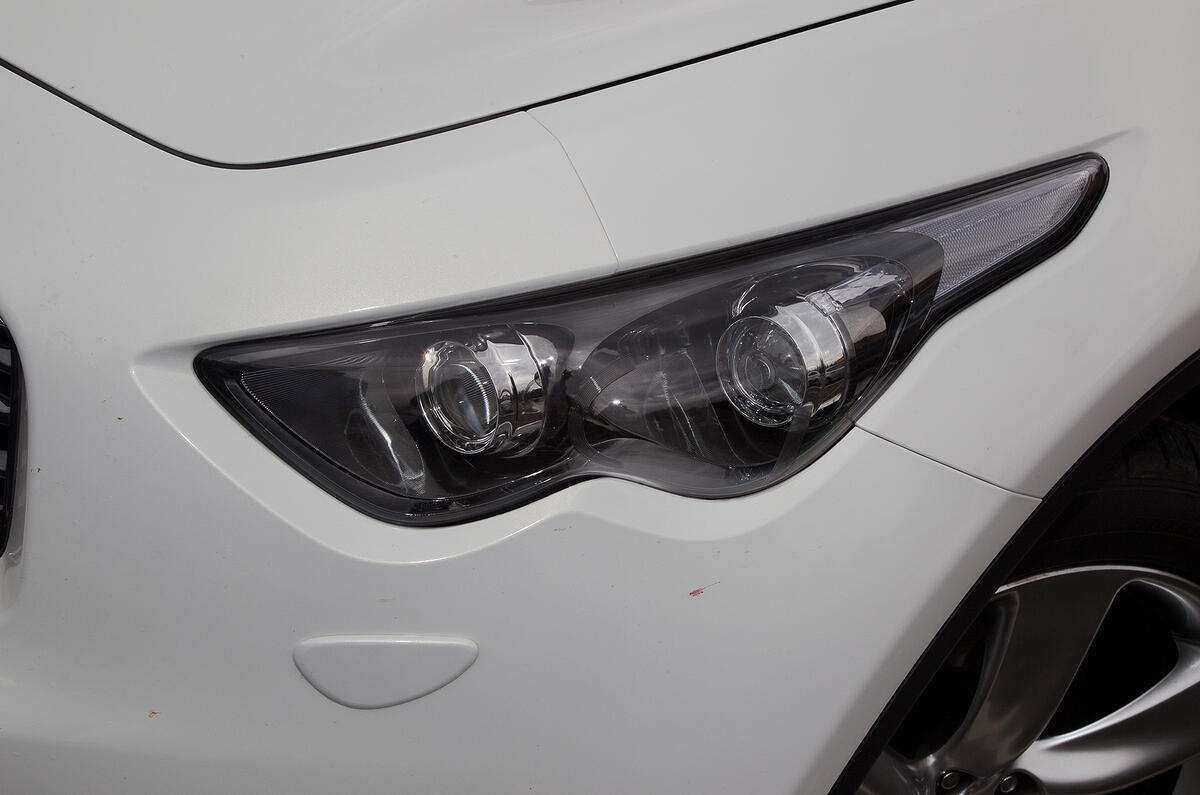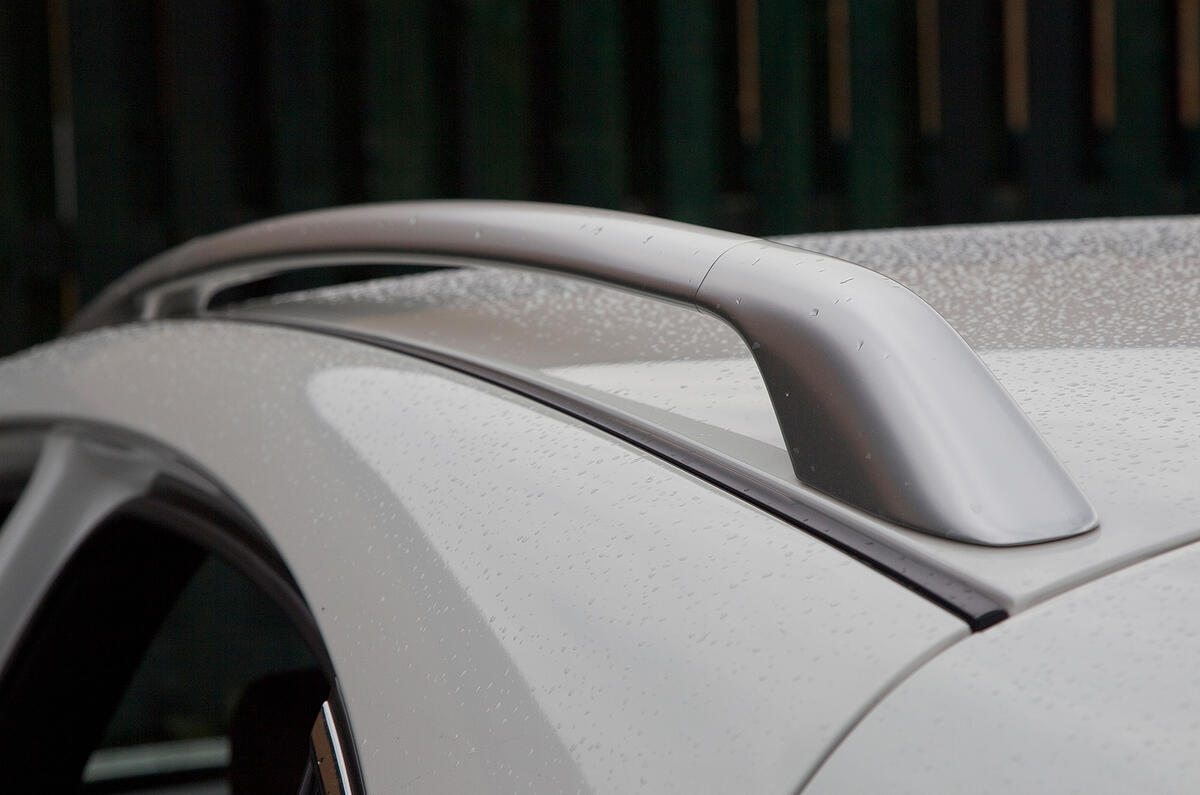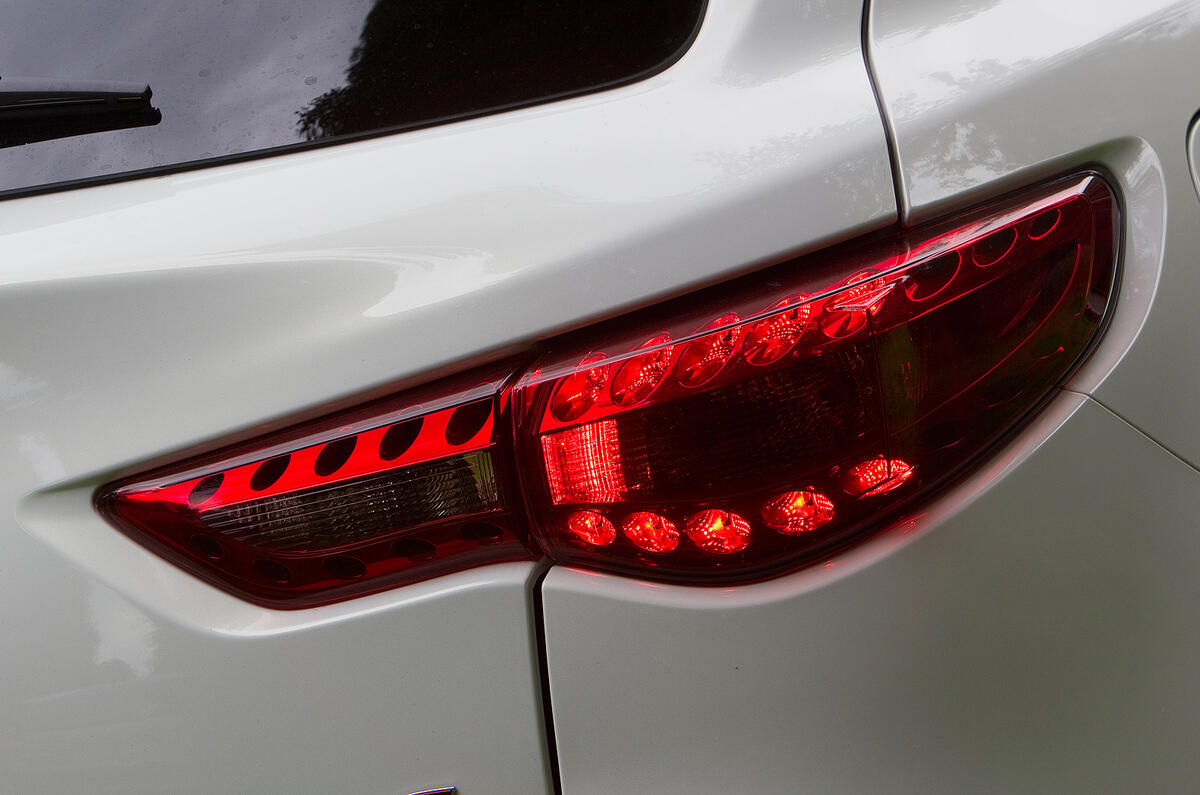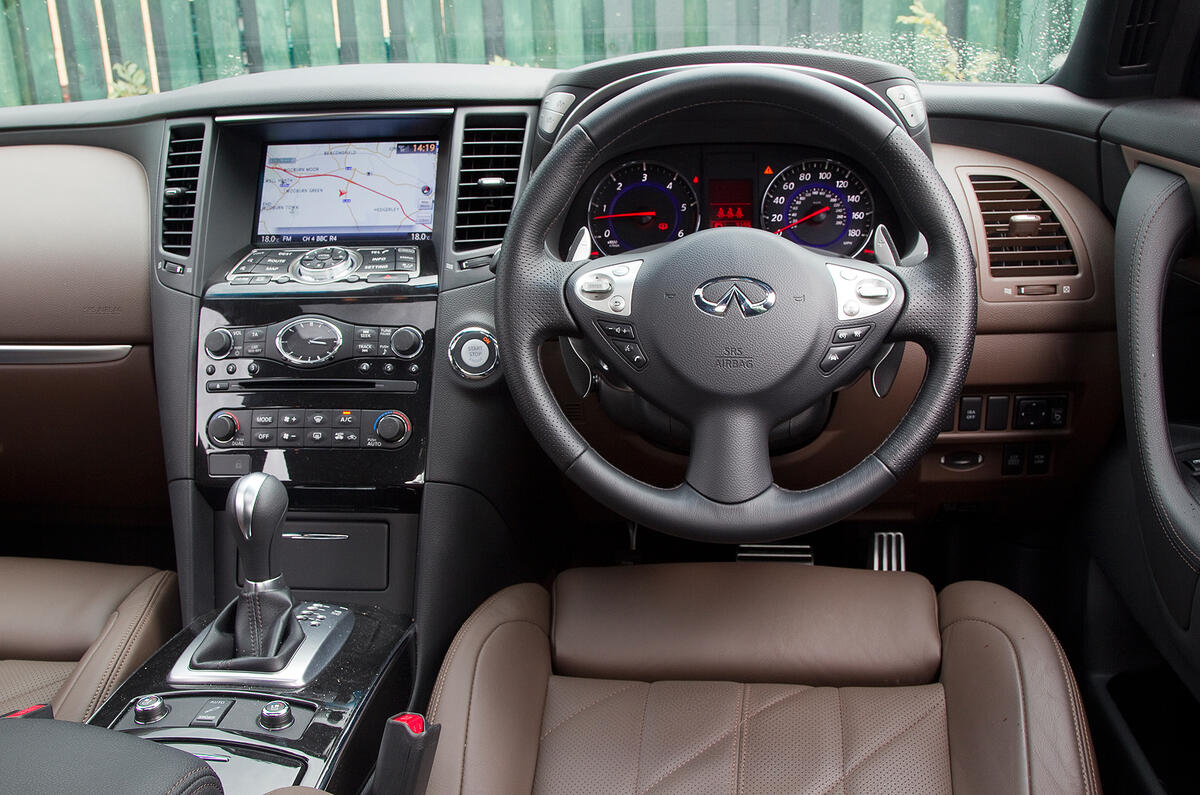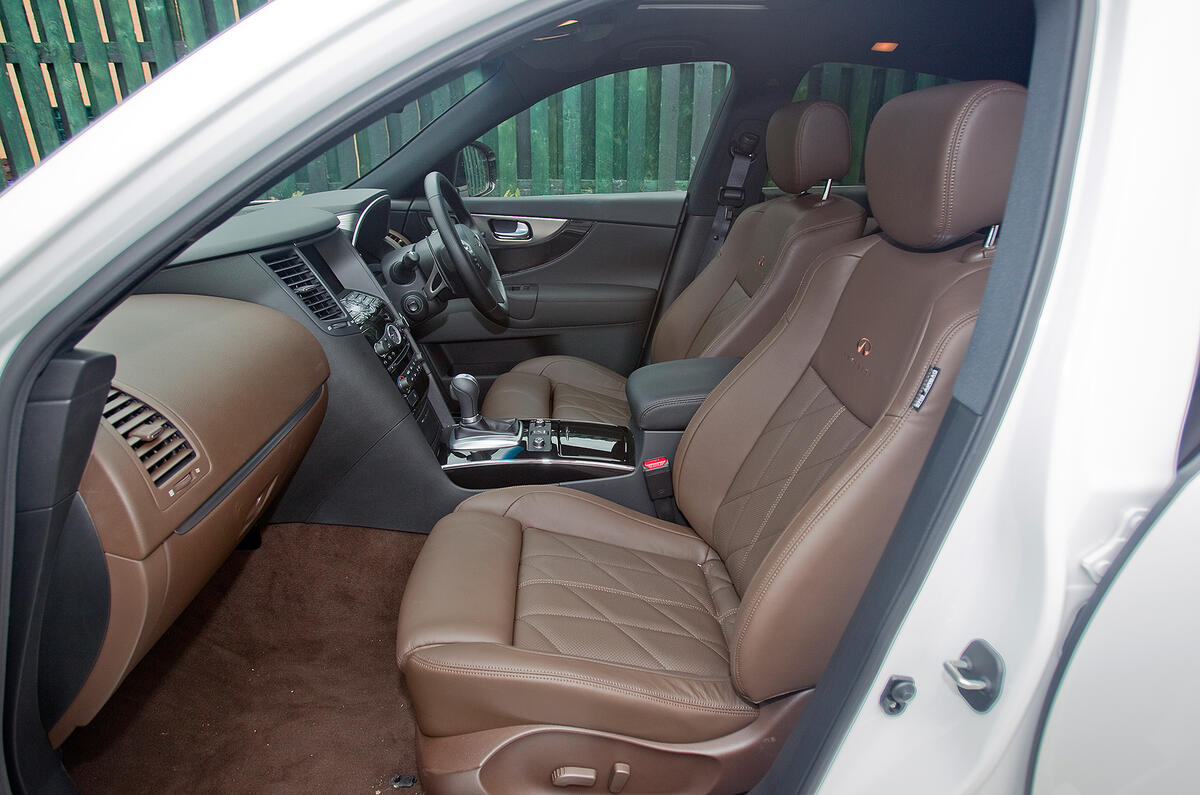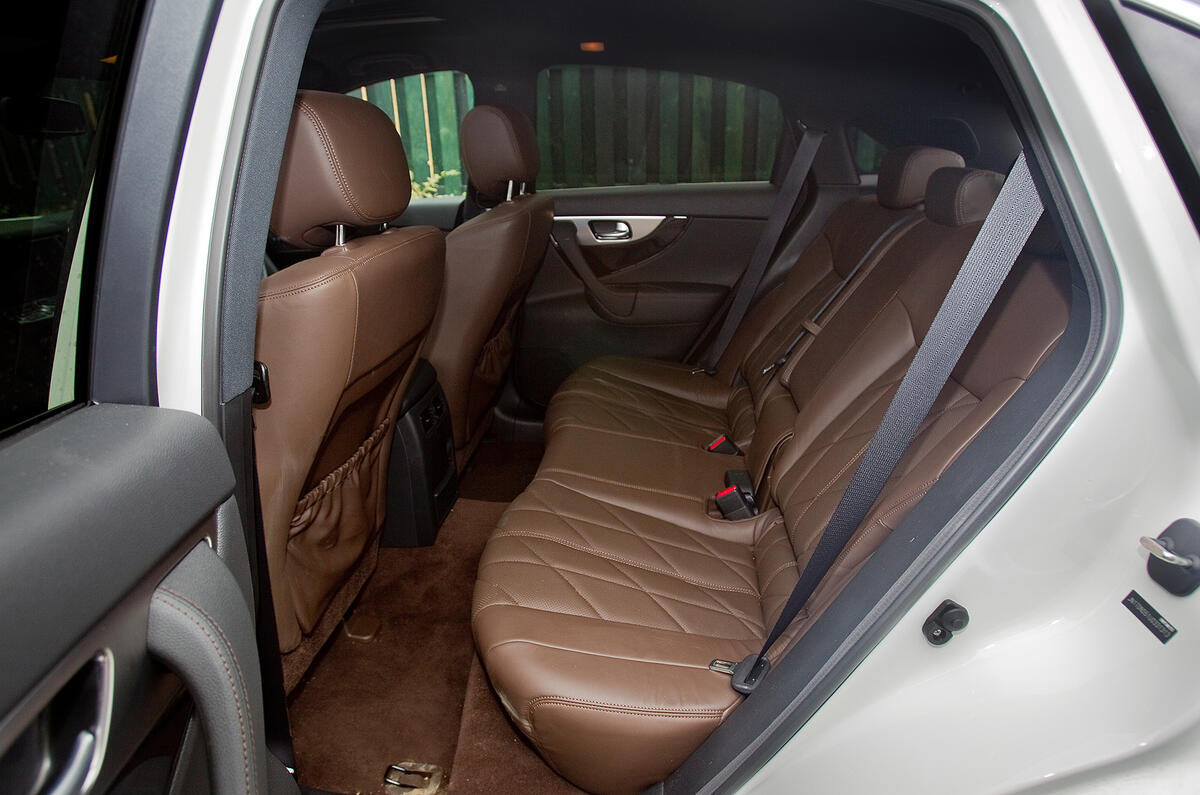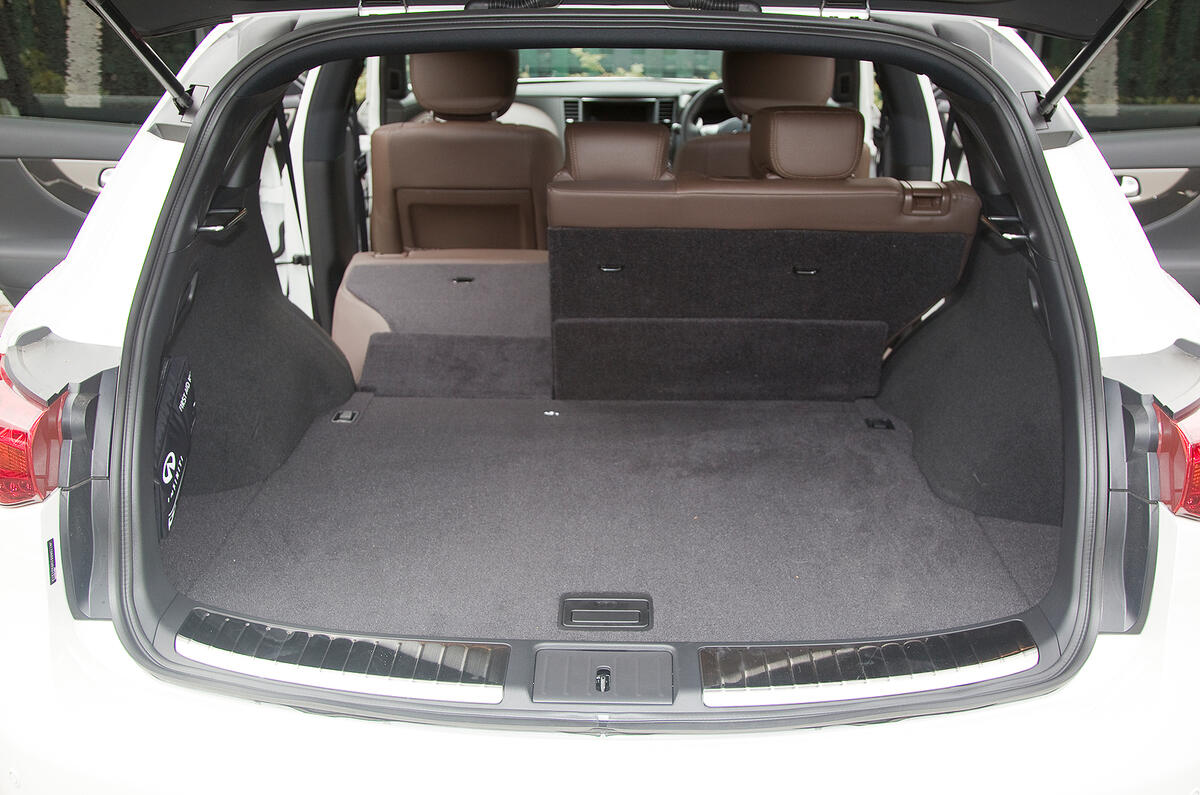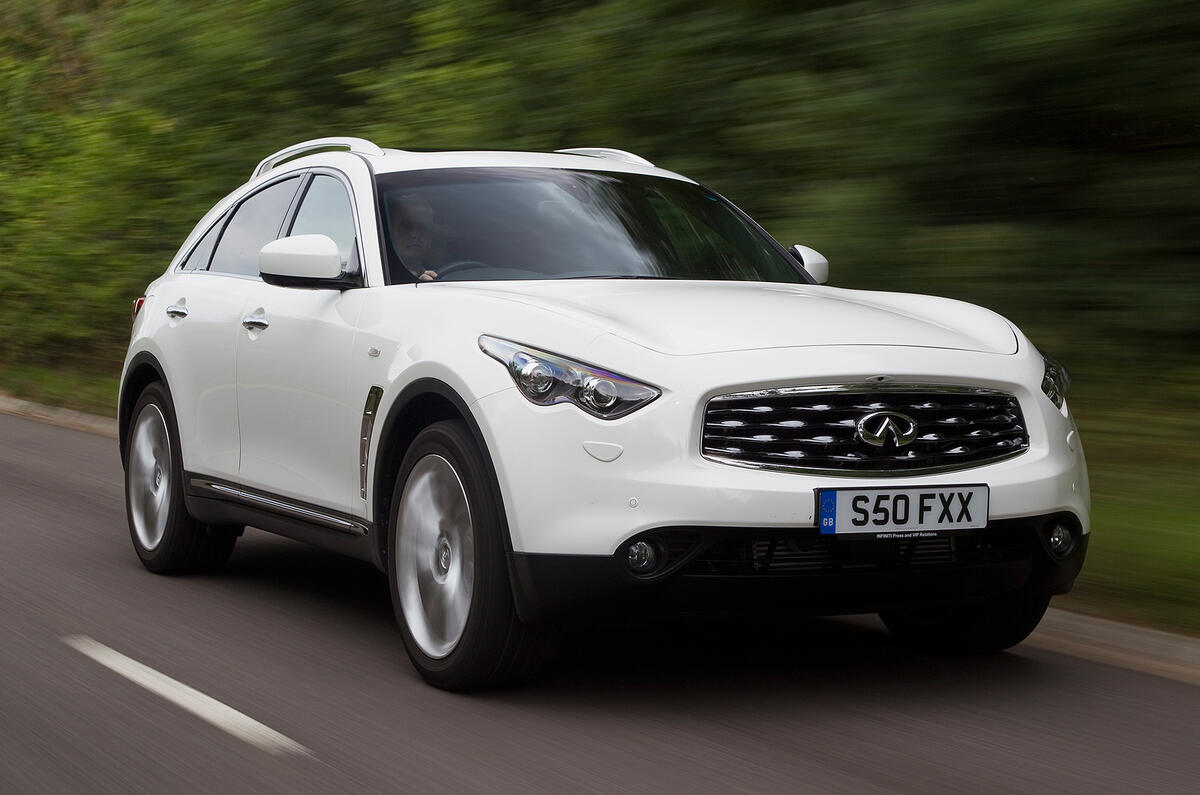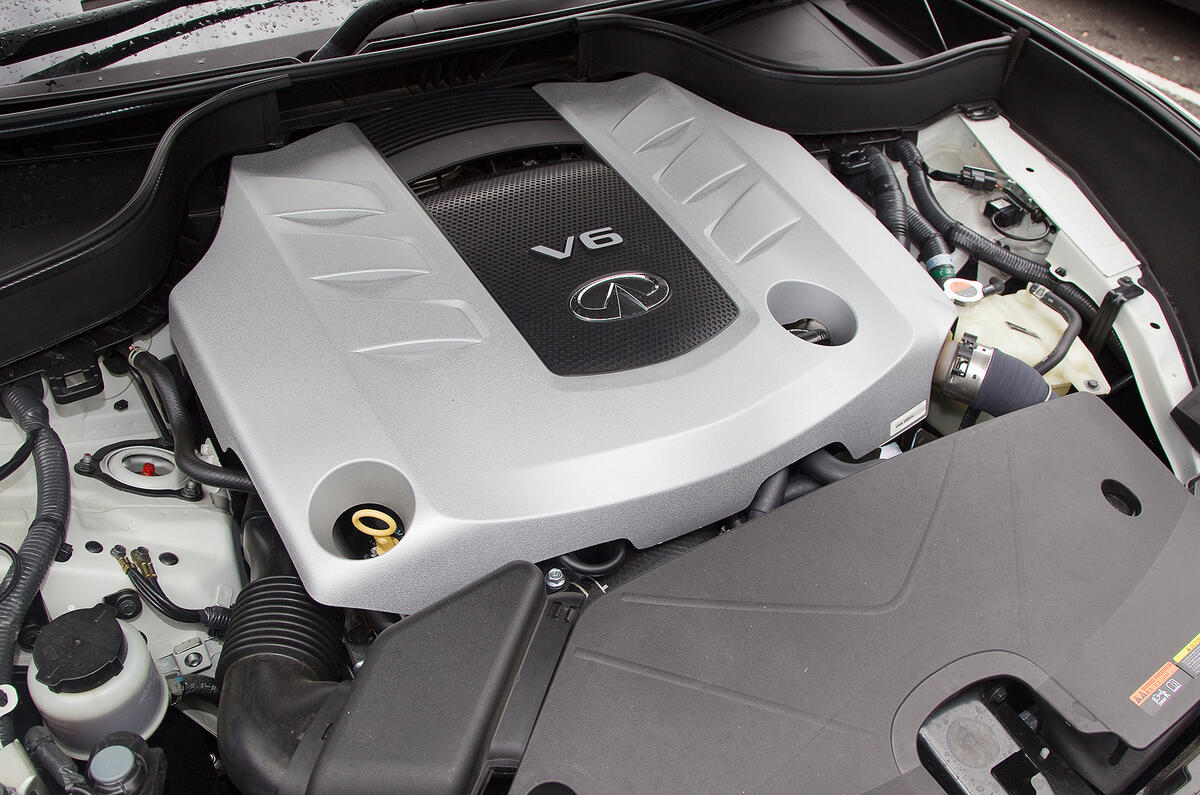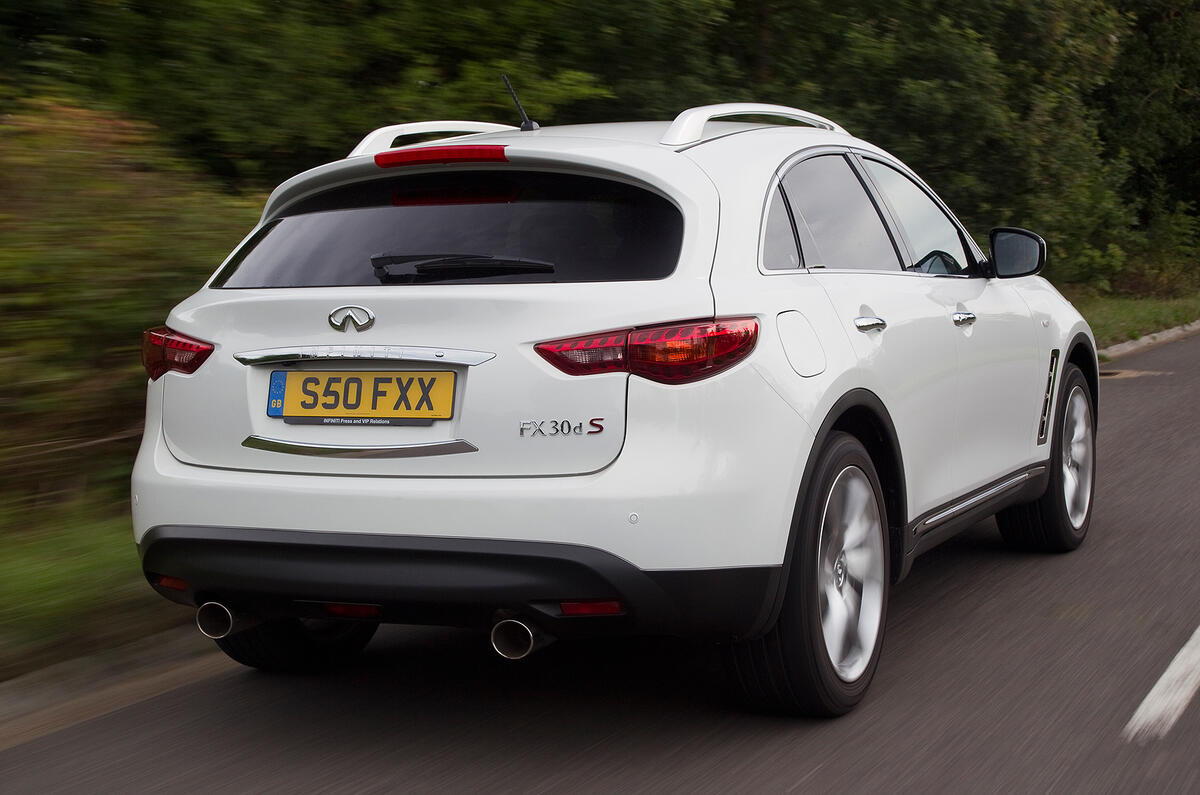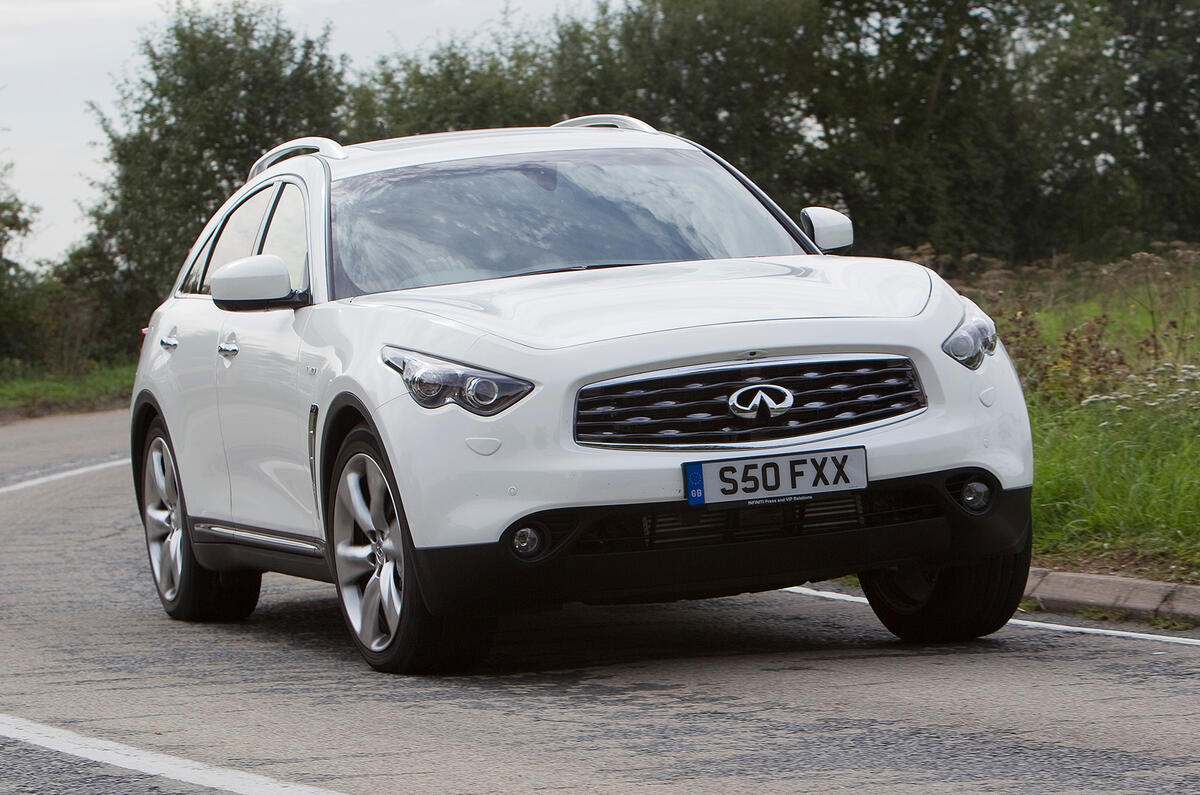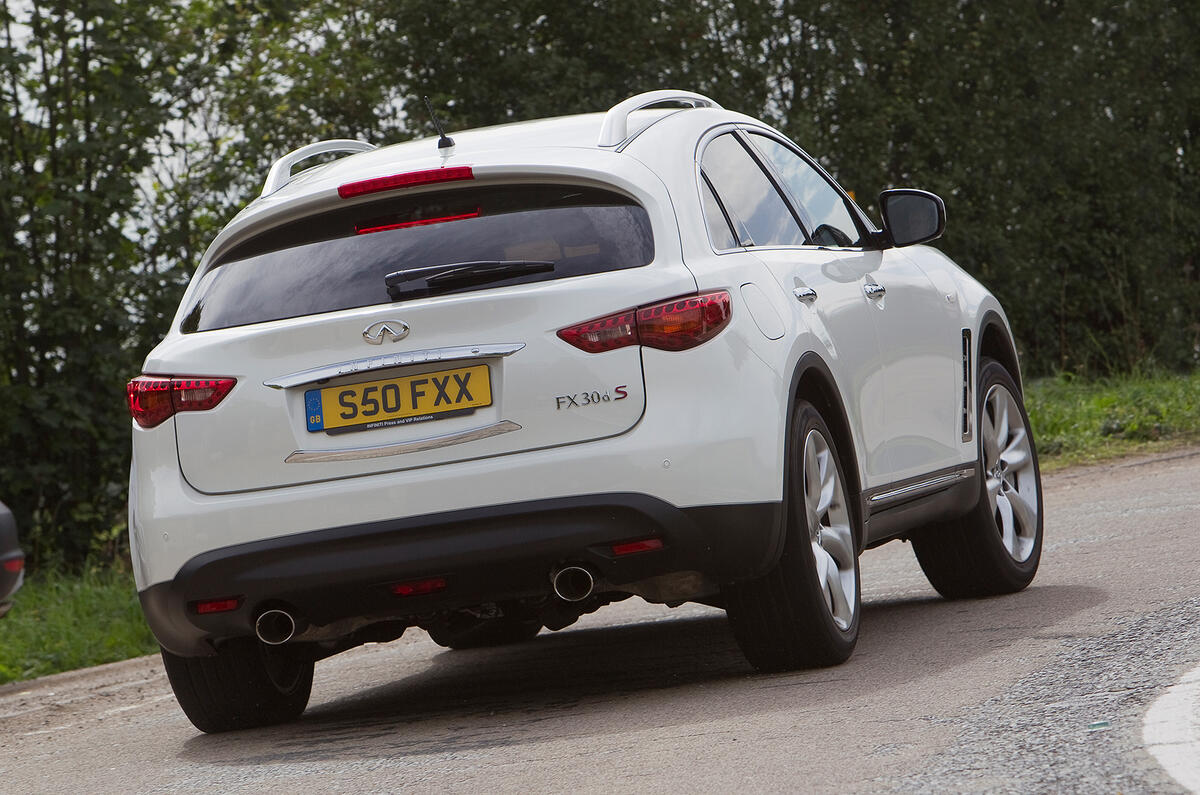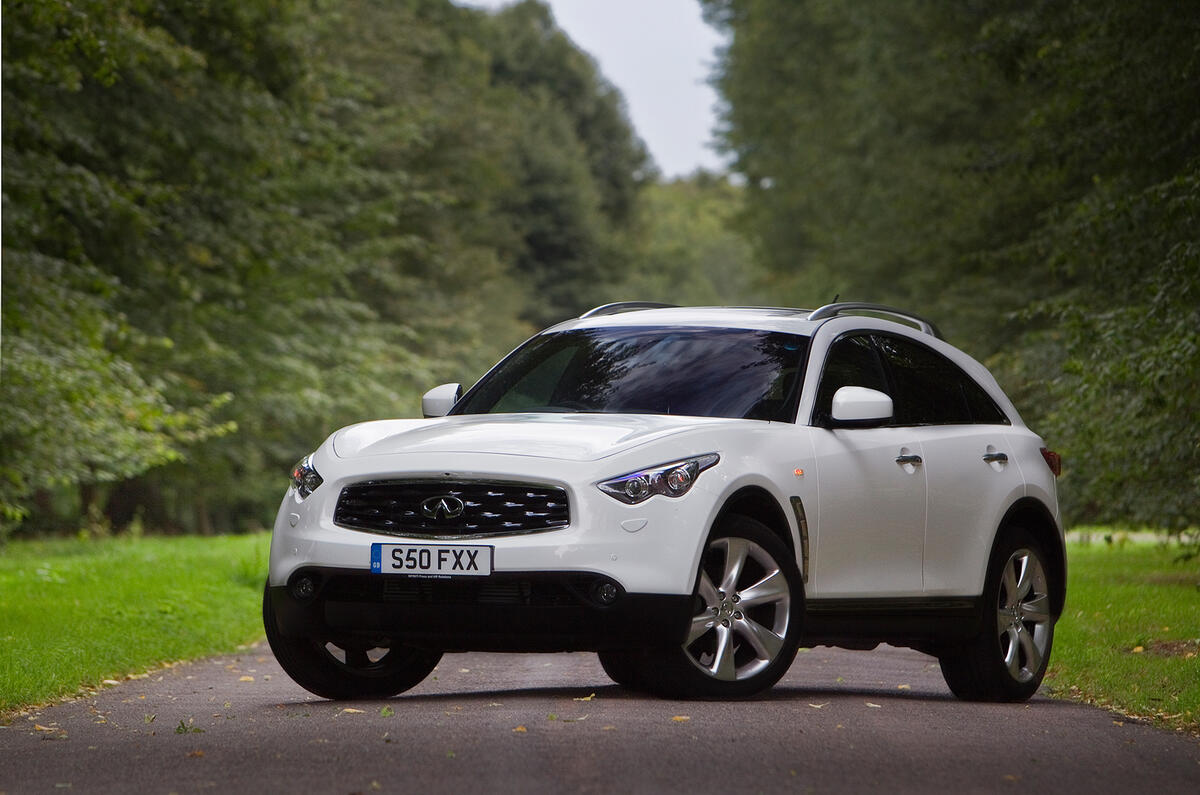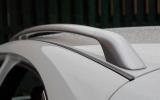Infiniti is a relative newcomer in Europe, having been launched to some acclaim in the US in 1989. With the FX, it claims to have created a “crossover without compromises”. And visually, at least, it’s hard not to be impressed by what’s on offer.
The FX comes with a 3.0-litre V6 diesel engine and seven-speed automatic gearbox, or a choice of 3.7-litre V6 or 5.0-litre V8 petrols, neither of which attract many buyers due to their thirst.
It’s a stylish, seductive-looking SUV that majors on design coherence rather more than it does pure functionality. Infiniti even goes so far as to describe the FX as “a sports car at heart”. Whether we’d go quite that far in agreement is questionable, but what’s clear is that the FX, even with a diesel engine, is an SUV that’s aimed at keen drivers who probably place style above function in their list of priorities.
The cheapest way into the FX range is still the V6 in GT trim but pricing puts the meat of the FX30d range within reach of both the Land Rover Discovery 4 and Range Rover Sport, as well as the Lexus RX450h and perhaps its closest rival in ethos, the distinctly road-biased BMW X5.
Infinitis come in GT and GT Premium or S and S Premium models in that level of cost and luxury.



